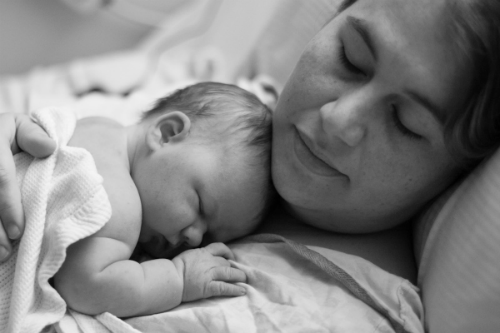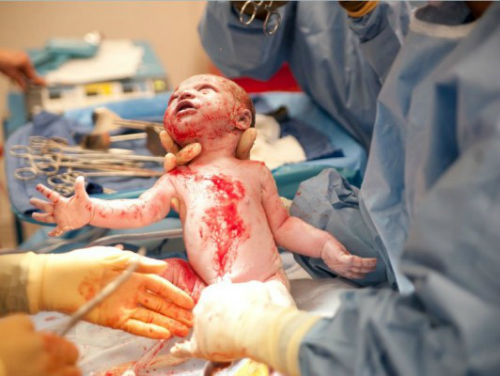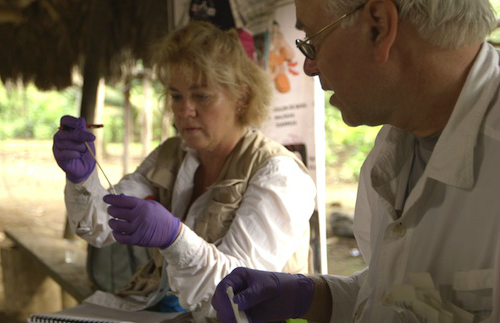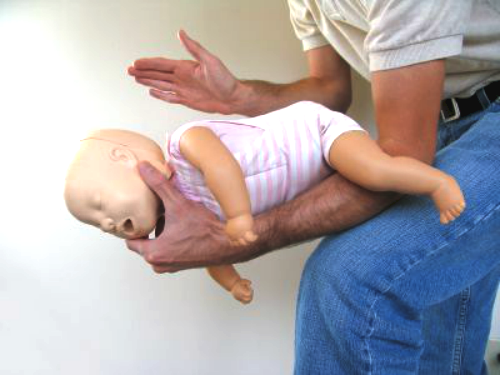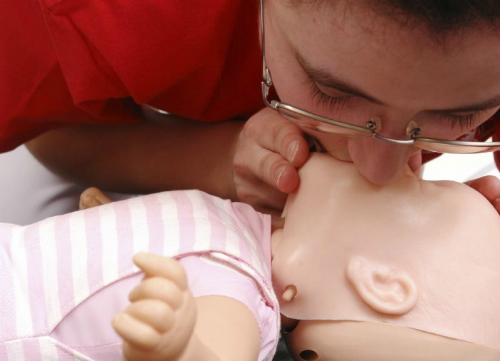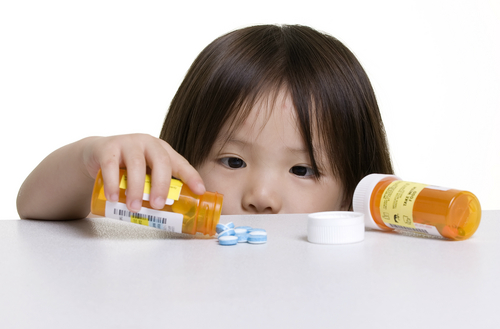“We can’t restore them 100 per cent, which isn’t surprising when you consider how long a baby is exposed to the vaginal microbes during labor, but there might be a window very early on after birth when we can help balance the immune system,” said New York University’s Associate Professor in Medicine, Dr. Maria Gloria Dominguez-Bello.
There is a new trend called ‘seeding’ that’s persistent throughout Australia (and probably soon to be popularized all over the globe) where newborn babies birthed via C-section or caesarean are thoroughly applied their mother’s (sterile) vaginal fluid. The process involves applying the fluid on the baby’s body including face and mouth using a swab.
Seeding is Trending
“A baby born vaginally is exposed to about 300 different bacteria as it comes down the birth canal. These bacteria set up the child’s microbiome, which is what enables their body to defend against all kinds of diseases. Obviously, when a baby is born by C-section, they aren’t exposed to these bacteria and their immune system isn’t as strong as a result,” explained Associate Professor of Midwifery, Dr. Hannah Dahlen, of University of Western Sydney.
The motive behind seeding is to enhance the C-section baby’s immune system by exposing to a range of (beneficial) bacteria as in a normal delivery where the baby birthed vaginally is naturally exposed to such bacteria while passing through the birth canal.
“We believe this is part of the reason why children born via C-section have an increased risk of autoimmune diseases.”
Baby’s Immune System Could be Balanced Partially
While the scientific reliability of the seeding method is still arguable, Dr. Dominguez-Bello, via a study conducted at New York University’s School of Medicine, explains that the babies could benefit from a short time post the birth.
Gynecologist and former President of Australian Medical Association commented “There is no doubt that there is a different exposure and a different balance in bacteria depending on the mode of birth – that is beyond dispute. The question is whether there are any significant health implications for the baby and in the short term, especially for very fragile babies with a risk of infection, it is quite plausible.”
The exposure to the mother’s vaginal fluid could help partially restore the important microbes lost by the baby during a C-section.
The Seeding Method Cannot be Implied
“It’s not happening routinely but there’s certainly discussion of it, and you really need scientific evidence to answer the question,” said Dr. Pesce.
He believes seeding to be relatively safe for the babies, however, advises to carry out tests for any possible harmful bacteria before committing to the method. “A lot of what makes intuitive sense sometimes doesn’t make sense and that is brought out when you do the studies and that’s why it’s happening… but it’s unlikely to cause much harm and it might do some good,” he continued.
With a view to prove the benefits one hundred percent, researchers demand a methodical study of at least 1,200 babies as nothing can be implied about the process as for now. Dr. Dominguez-Bello said “We can’t yet imply anything about improving the baby’s health in terms of its risk of disease though… in order to prove that, we need to conduct a study of 1200 babies, and that’s something we’re working towards.”
3 Most Common Baby Injuries and their Hacks
Parenthood is exciting but also terrifying given that your infant just begins to adjust herself in this new world (out of her mother’s womb). Watching her stand and walk, saying “papa”, or eating her first solid food would probably be the best moments of your life as a parent. However, these exciting milestones of your infant could be infiltrated with unanticipated accidents and mishaps. To avoid these obstacles in your infant’s life progress, get these tips and stay prepared well ahead.
What if your infant gets chocked?
Step 1: If she’s on a highchair, take her down.
Step 2: Get her face-down along your arm lengthwise while placing her face in your palm.
Step 3: Slightly tip her head towards the floor so as to use gravity to force the food out.
Step 4: Whack 5 times on her back at the middle of her shoulder blades using the heel of your hand or your palm.
Step 5: Along the nipple line, press 5 times at the center of her chest using your index and middle finger pressed together. Consider her lungs as air cannon as if you’re looking to pop the food out.
What if your infant gets drowned?
Step 1: Pick the baby out of the water and place her flat on the ground while someone gets help in the meantime.
Step 2: If her breathing is abnormal, consider administering CPR.
Step 3: Give 30 compressions along the nipple line, at the center of her chest, using your index and middle finger. Remember to keep the compressions 1.5 inches deep approximately.
Step 4: Avoid her tongue to block the airway (as it may fall back) by tilting her chin up while slowly pushing her head back.
Step 5: Supply her oxygen by breathing out gently as you seal your lips around her mouth and nose.
Step 6: Continue Step 3 and Step 4 until she starts breathing normally or the help comes by.
What if your infant gets a poisonous substance swallowed?
Step 1: Parents should call for emergency help of a pediatrician or doctor without wasting any time.
Step 2: Avoid forcing your baby to vomit out the substance.
Step 3: Keep handy the container of the substance she swallowed from, so that you could answer questions asked by the doctor to better and faster treat your baby.
Step 4: You can give her water to drink so as to reduce the intensity of the substance by diluting it.
Step 5: If there’s any liquid on her body (hands, face, or legs), wash it off using soap and water as she may further worsen the problem by rubbing it in her eyes or any other delicate area.
Step 6: If she has inhaled toxic fumes, give her some fresh air.
Step 7: Follow the doctor’s instructions properly.
